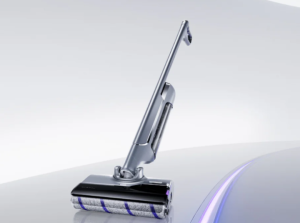
In the world of home cleaning, robots have revolutionized the way we maintain our floors. They move smoothly across rooms, adapting to different surfaces like hardwood, carpet, and tiles. But how do these intelligent machines handle the shift between floor textures without missing a beat? Let’s explore how cleaning robots make transitioning between different surfaces a breeze.
Understanding Different Floor Textures
Your home is likely a mix of floor types, from hardwood in the living room to carpets in the bedrooms, and perhaps tiles in the kitchen. Each surface has its own set of cleaning challenges.
Carpets hold dust and dirt, while hardwood can get scratched or scuffed easily. Tiles often trap dirt in grout lines. For a cleaning robot to perform well, it needs to handle these variations smoothly and efficiently.
Challenges of Changing Floor Textures
When a cleaning robot moves from one type of flooring to another, it faces several challenges. Carpet fibers are thicker, which creates resistance for the robot, while hardwood floors are smooth and offer less friction.
Similarly, tile floors may have uneven surfaces, causing some difficulty for a machine designed for flat, sleek surfaces. The robot must adjust its cleaning method, suction power, and movement to clean effectively on each type of surface.
Adapting Suction Power and Movement
One of the key ways cleaning robots handle changing textures is by adjusting their suction power. When moving from a hard floor to a thick carpet, the robot increases its suction to pick up dirt deeply embedded in the fibers.
On hard surfaces, it reduces the suction, ensuring it doesn’t waste battery power or potentially scratch the surface.
The robot’s movement also adapts to different surfaces. On smoother floors, it glides effortlessly, but it applies more torque when moving onto carpets, making sure it doesn’t get stuck or slow down.
Some models even come equipped with sensors that detect the type of surface in real time, allowing for seamless transitions.
Sensing and Navigating Floor Changes
Advanced cleaning robots are equipped with sensors that detect different floor textures. These sensors work by identifying changes in surface resistance and adjusting the robot’s behavior accordingly.
For example, when the robot moves from a hardwood floor onto a carpet, the sensors recognize the added resistance and signal the machine to switch cleaning modes.
The navigation system in these robots also plays a crucial role. Robots are programmed to navigate different floor types without missing spots or getting stuck.
Whether it’s smoothly transitioning from a tile floor in the kitchen to a carpeted living room or moving across rugs, the robot needs to know how to manage changes in floor height and texture.
Tackling Thresholds and Rugs
One of the most impressive features of cleaning robots is their ability to cross thresholds or move from one room to another. Many homes have slight height differences between rooms or surfaces, like moving from a hardwood hallway to a tiled kitchen.
Cleaning robots are designed to handle these shifts with ease. They can climb small heights and navigate through uneven surfaces, ensuring they don’t leave any areas untouched.
Rugs pose a unique challenge because of their raised edges or thick fibers. A well-designed cleaning robot will detect a rug and adjust its movement, ensuring it doesn’t get stuck or tangled. The robot adapts its suction to clean the rug thoroughly, all while being gentle enough not to damage it.
Efficient Cleaning on All Surfaces
The secret to how cleaning robots manage floor transitions lies in their ability to adapt quickly and efficiently. These machines are programmed to recognize when they need more or less suction, how to adjust their speed, and how to tackle varying floor heights.
Whether it’s smoothly moving from tile to carpet or climbing onto a rug, a good cleaning robot keeps the home spotless without manual intervention.
For example, if you are looking for a cleaning robot that effortlessly transitions between different floor textures, consider exploring Narwal. It combines smart navigation with adaptable cleaning techniques, ensuring a deep clean on every type of floor.
Conclusion
Cleaning robots have become essential for maintaining a clean and tidy home, especially for busy households. Their ability to handle changing floor textures is one of the standout features that makes them so convenient.
By adjusting suction power, movement, and using advanced sensors, these robots make transitioning from hardwood to carpet and back again look effortless.
Whether you have carpets, tiles, or hardwood floors, a cleaning robot can manage the switch between surfaces, keeping every area spotless. Next time you’re considering an upgrade in home cleaning, look for a model that excels at adapting to different floor textures, ensuring every corner of your home shines.


